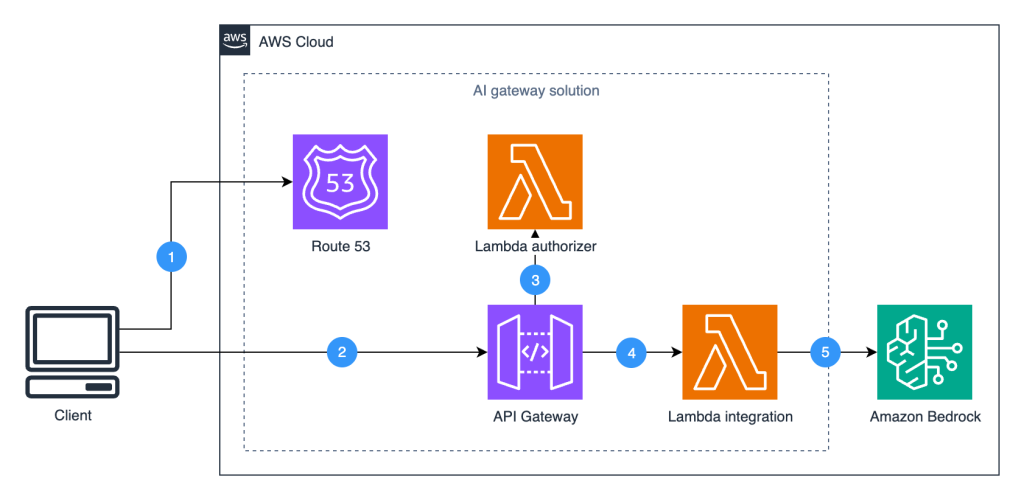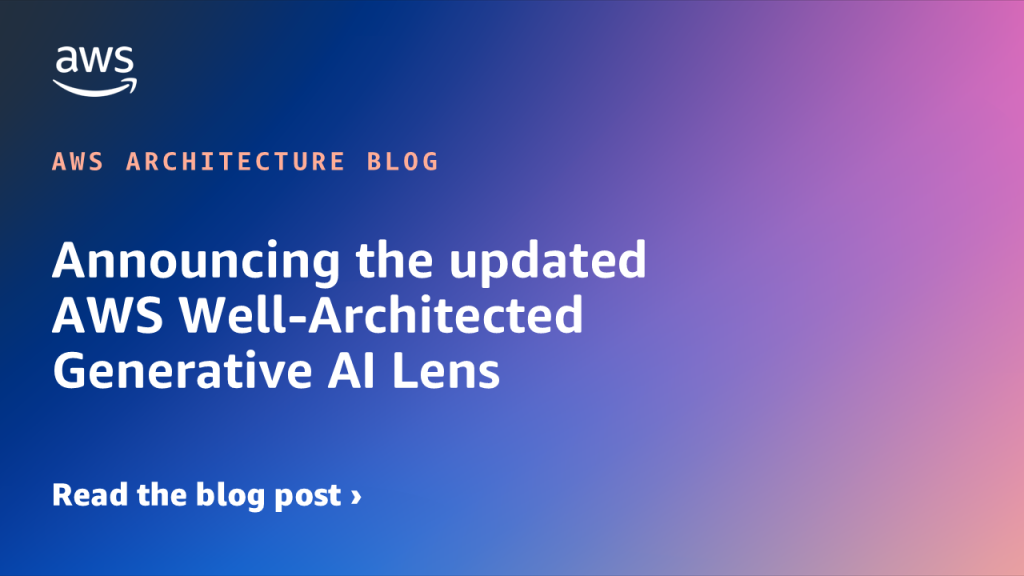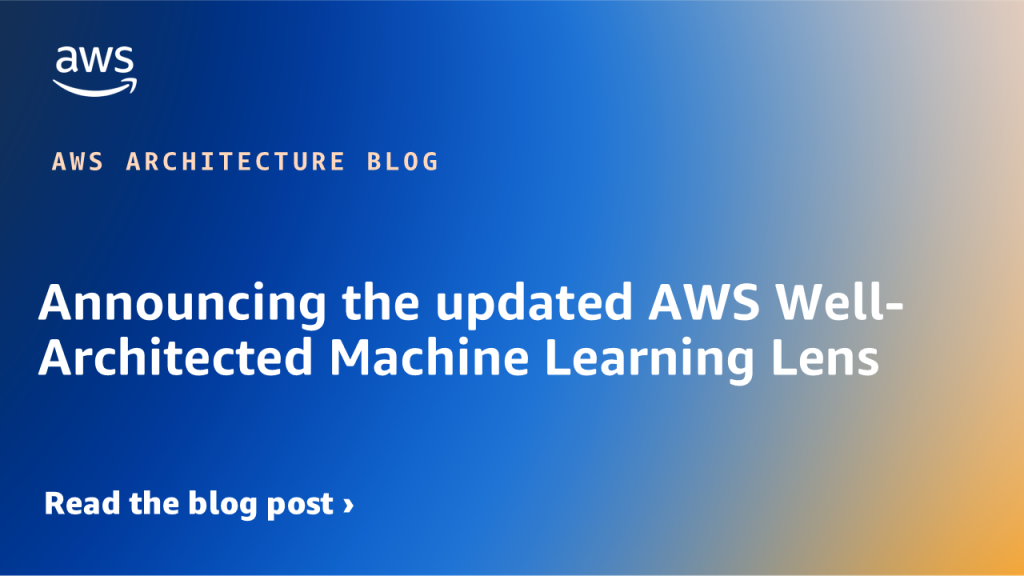AWS Architecture Blog
Category: Artificial Intelligence
Building an AI gateway to Amazon Bedrock with Amazon API Gateway
In this post, we’ll explore a reference architecture that helps enterprises govern their Amazon Bedrock implementations using Amazon API Gateway. This pattern enables key capabilities like authorization controls, usage quotas, and real-time response streaming. We’ll examine the architecture, provide deployment steps, and discuss potential enhancements to help you implement AI governance at scale.
Architecting for AI excellence: AWS launches three Well-Architected Lenses at re:Invent 2025
At re:Invent 2025, we introduce one new lens and two significant updates to the AWS Well-Architected Lenses specifically focused on AI workloads: the Responsible AI Lens, the Machine Learning (ML) Lens, and the Generative AI Lens. Together, these lenses provide comprehensive guidance for organizations at different stages of their AI journey, whether you’re just starting to experiment with machine learning or already deploying complex AI applications at scale.
Announcing the updated AWS Well-Architected Generative AI Lens
We are delighted to announce an update to the AWS Well-Architected Generative AI Lens. This update features several new sections of the Well-Architected Generative AI Lens, including new best practices, advanced scenario guidance, and improved preambles on responsible AI, data architecture, and agentic workflows.
Announcing the updated AWS Well-Architected Machine Learning Lens
We are excited to announce the updated AWS Well-Architected Machine Learning Lens, now enhanced with the latest capabilities and best practices for building machine learning (ML) workloads on AWS.
Build resilient generative AI agents
Generative AI agents in production environments demand resilience strategies that go beyond traditional software patterns. AI agents make autonomous decisions, consume substantial computational resources, and interact with external systems in unpredictable ways. These characteristics create failure modes that conventional resilience approaches might not address. This post presents a framework for AI agent resilience risk analysis […]
Deploy LLMs on Amazon EKS using vLLM Deep Learning Containers
In this post, we demonstrate how to deploy the DeepSeek-R1-Distill-Qwen-32B model using AWS DLCs for vLLMs on Amazon EKS, showcasing how these purpose-built containers simplify deployment of this powerful open source inference engine. This solution can help you solve the complex infrastructure challenges of deploying LLMs while maintaining performance and cost-efficiency.
Migrate and modernize VMware workloads with AWS Transform for VMware
AWS Transform for VMware is a service that tackles cloud migration challenges by significantly reducing manual effort and accelerating the migration of critical VMware workloads to AWS Cloud. In this post, we highlight its comprehensive capabilities, including streamlined discovery and assessment, intelligent network conversion, enhanced security and compliance, and orchestrated migration execution.
Simplifying sustainability reporting using AWS and generative AI in banking
In this post, you learn how you can use generative AI services on Amazon Web Services (AWS) to automate your sustainability reporting requirements, reduce manual effort, and improve accuracy. You do this by implementing an automated solution for extracting, processing, and validating data from corporate reports.
Amazon Bedrock baseline architecture in an AWS landing zone
In this post, we explore the Amazon Bedrock baseline architecture and how you can secure and control network access to your various Amazon Bedrock capabilities within AWS network services and tools. We discuss key design considerations, such as using Amazon VPC Lattice auth policies, Amazon Virtual Private Cloud (Amazon VPC) endpoints, and AWS Identity and Access Management (IAM) to restrict and monitor access to your Amazon Bedrock capabilities.
Analyze media content using AWS AI services
Organizations managing large audio and video archives face significant challenges in extracting value from their media content. Consider a radio network with thousands of broadcast hours across multiple stations and the challenges they face to efficiently verify ad placements, identify interview segments, and analyze programming patterns. In this post, we demonstrate how you can automatically transform unstructured media files into searchable, analyzable content.









